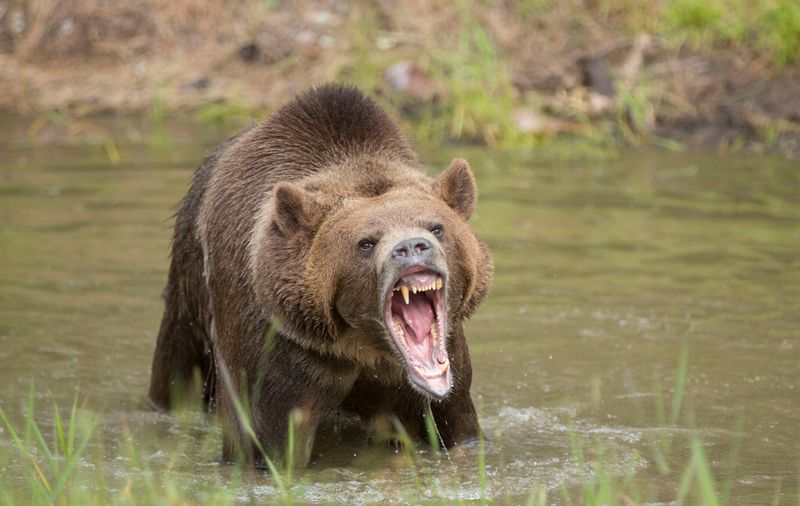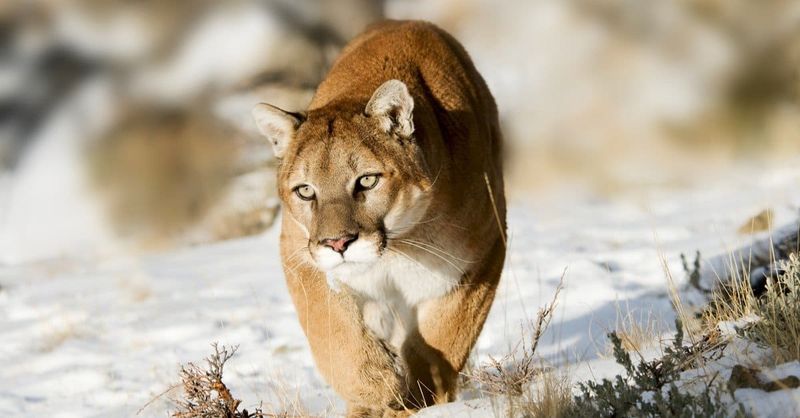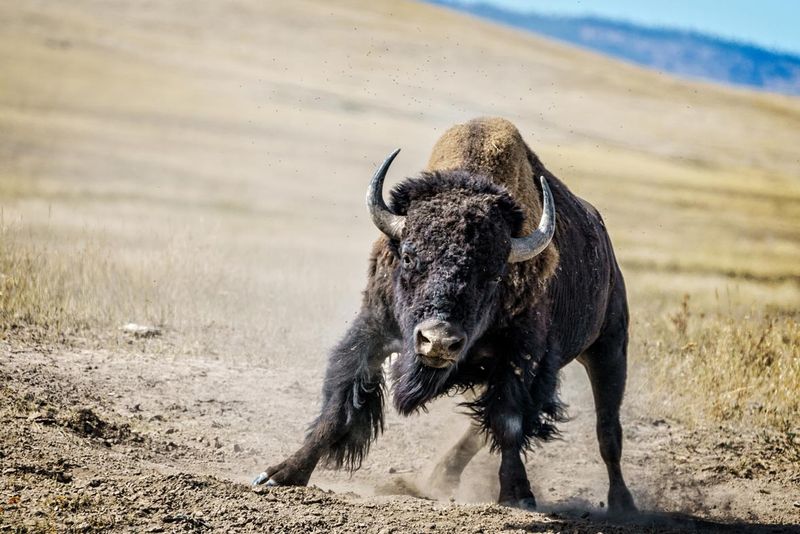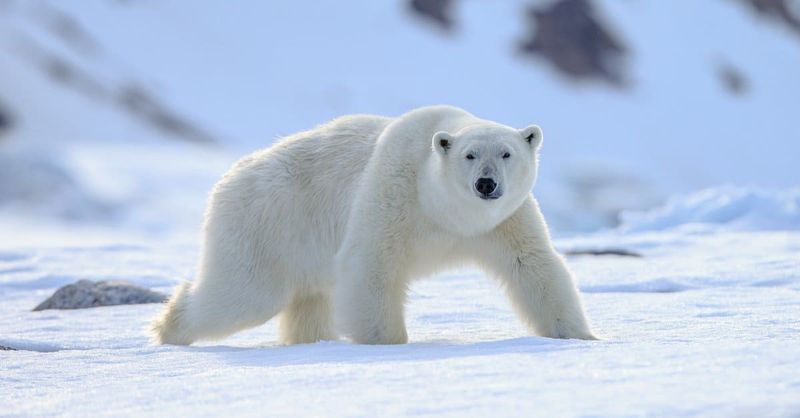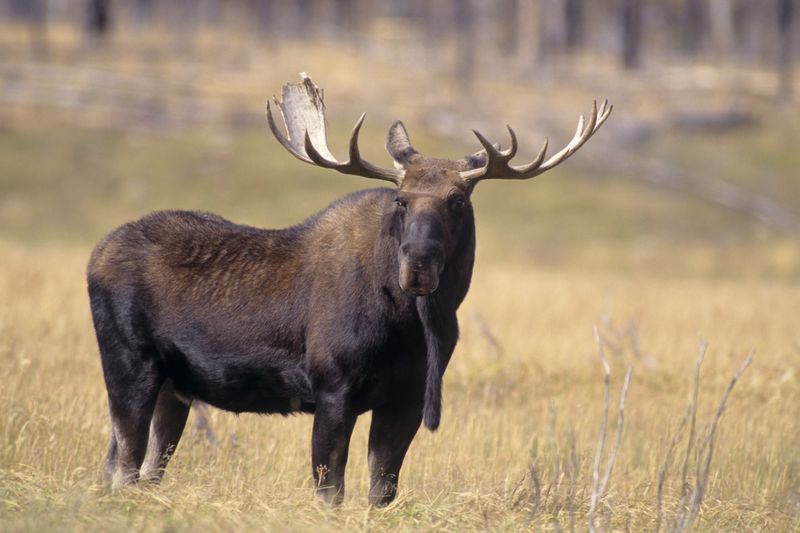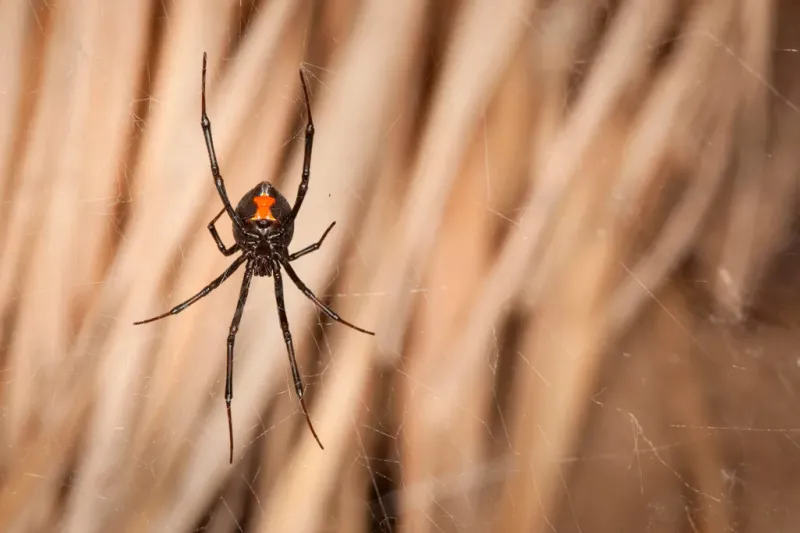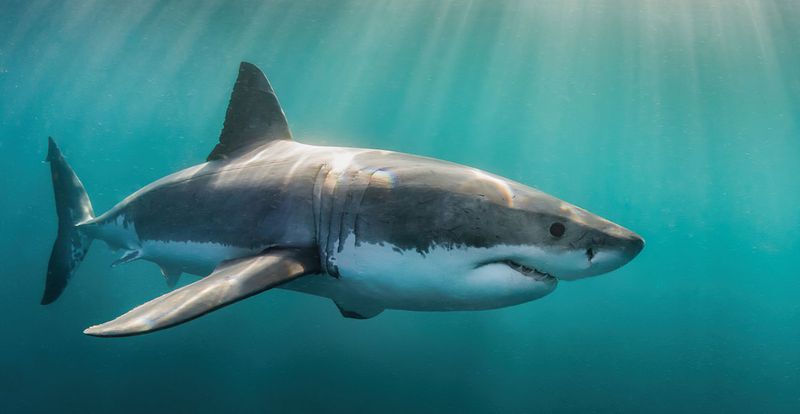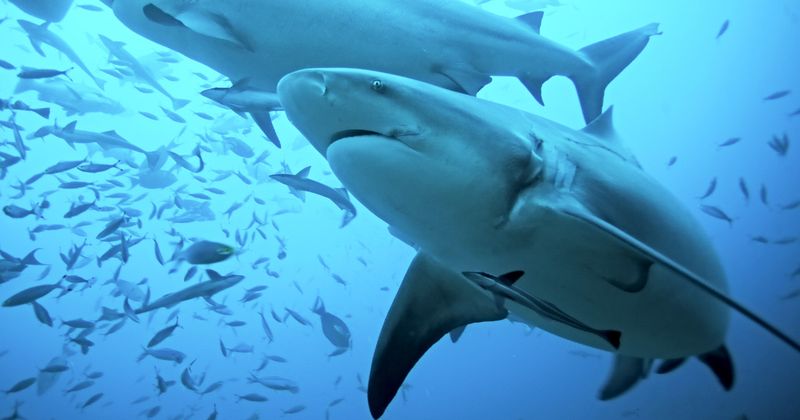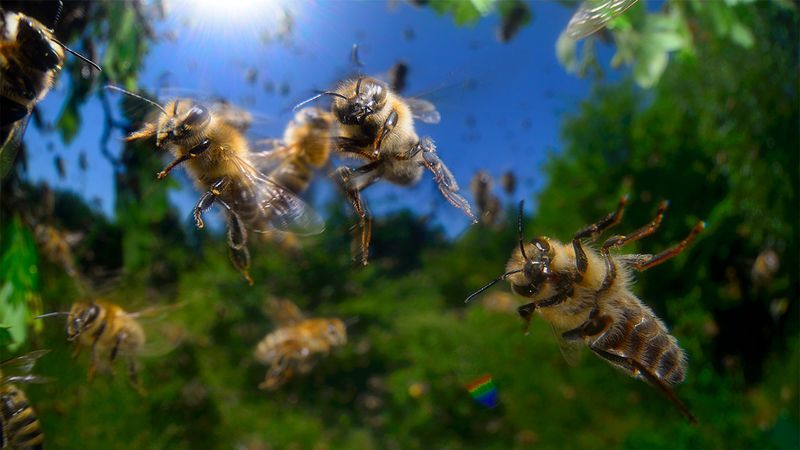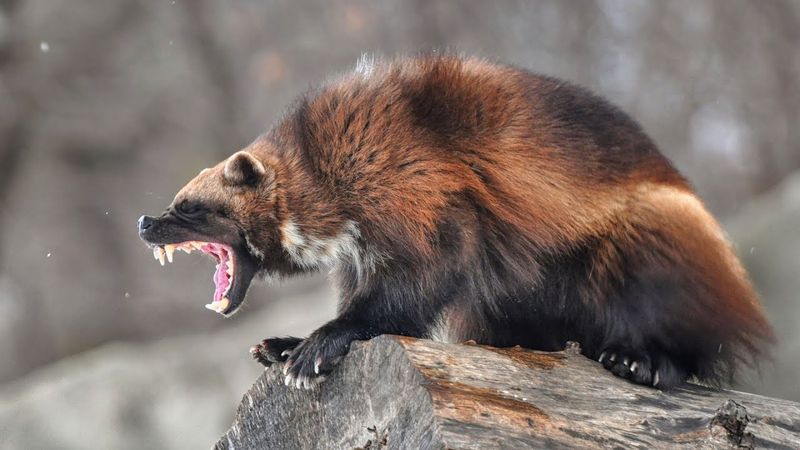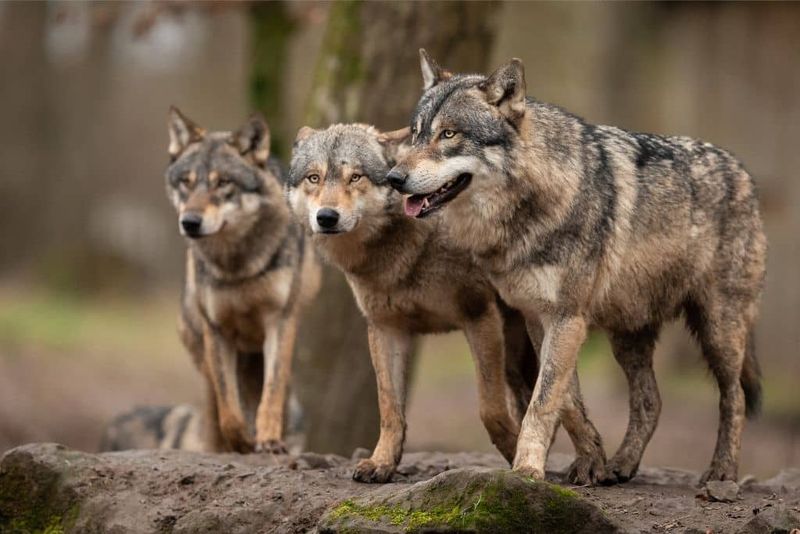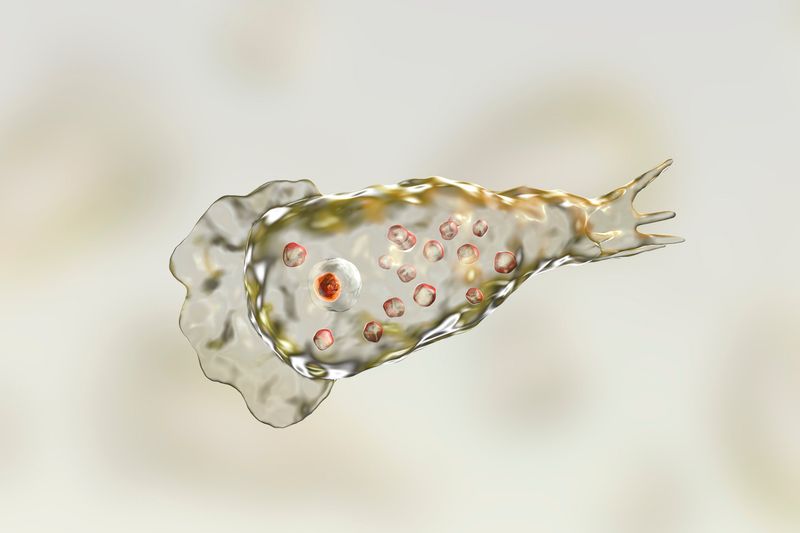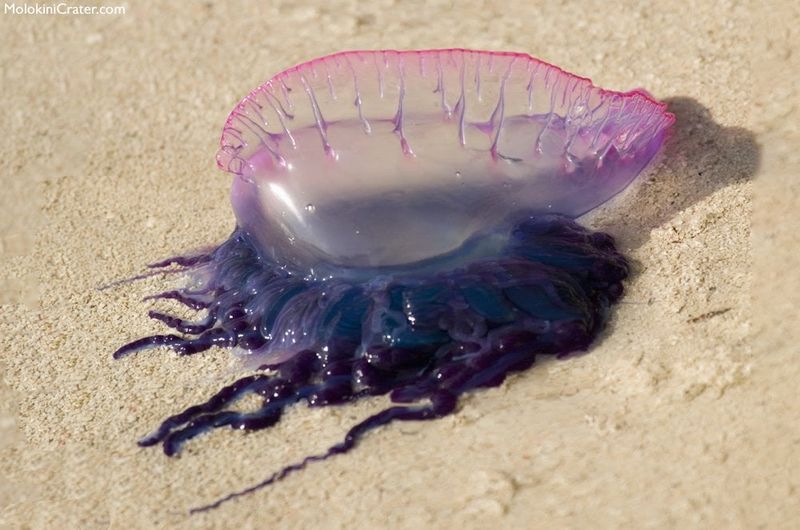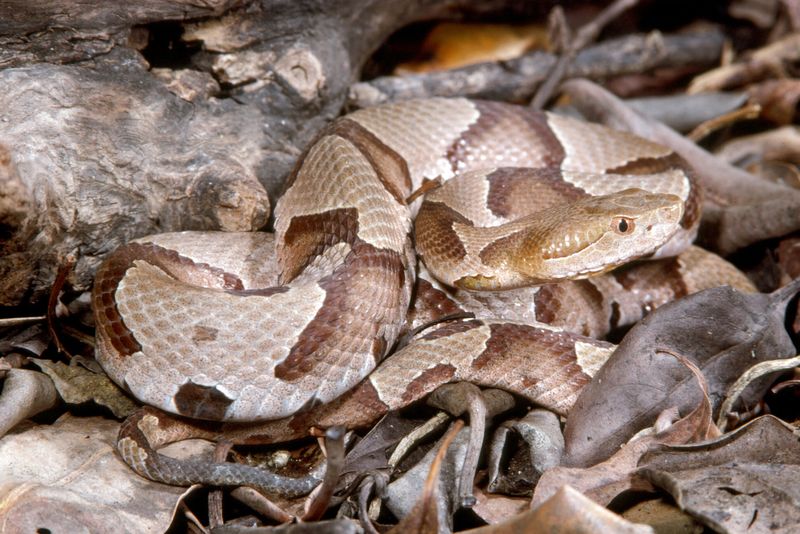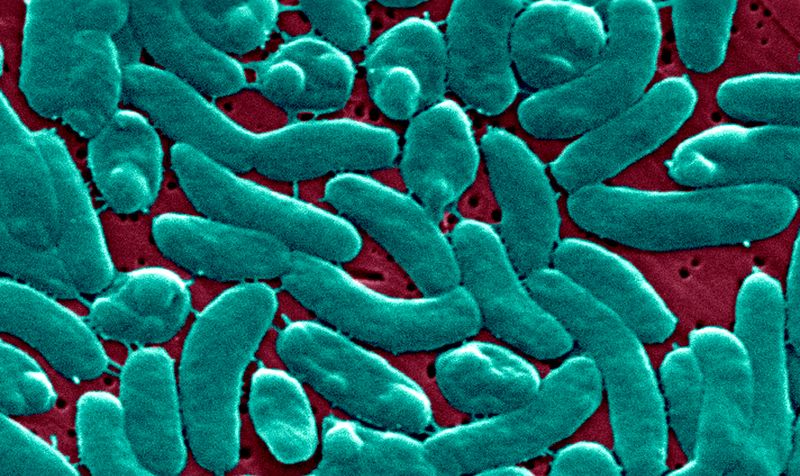📖 Table of Content:
- 1. Grizzly Bears
- 2. Mountain Lions
- 3. American Alligators
- 4. Timber Rattlesnakes
- 5. Bison
- 6. Polar Bears
- 7. Moose
- 8. Black Widow Spiders
- 9. Great White Sharks
- 10. Brown Recluse Spiders
- 11. Bull Sharks
- 12. Arizona Bark Scorpions
- 13. American Crocodiles
- 14. Killer Bees
- 15. Wolverines
- 16. Wolf Packs
- 17. Brain-Eating Amoebas
- 18. Box Jellyfish
- 19. Copperhead Snakes
- 20. Flesh-Eating Bacteria
North America’s vast landscapes are home to both breathtaking scenery and hidden dangers. Across forests, mountains, and deserts, wildlife thrives in often unpredictable ways. Among these animals are some that possess the power to seriously harm or even kill.
Many of these creatures use venom, strength, or stealth to defend themselves or catch prey. Some strike without warning, while others may appear harmless until it’s too late. Understanding their behaviors can help reduce the risk of unexpected encounters.
Fatal encounters are uncommon but not impossible. Certain animals have been responsible for injuries, attacks, and even deaths. Awareness and respect for these creatures are essential when exploring their territory.
1. Grizzly Bears
Massive and unpredictable, grizzly bears can weigh up to 800 pounds with claws measuring four inches long. These powerful omnivores possess incredible strength, capable of flipping boulders weighing hundreds of pounds with ease.
Grizzlies can sprint at speeds reaching 35 mph, making outrunning them impossible. Their acute sense of smell detects food from miles away, sometimes leading to dangerous human encounters.
Most attacks occur when bears are surprised or defending cubs. While fatalities are rare with only about two deaths annually across North America, encounters with these magnificent predators can turn deadly in seconds.
2. Mountain Lions
Silent stalkers of the North American wilderness, mountain lions rarely give any warning before attacking. These stealthy predators can leap 40 feet horizontally and 15 feet vertically, making them nearly impossible to escape once they’ve targeted prey.
Adults typically weigh between 80-200 pounds but possess strength disproportionate to their size. Unlike many predators, mountain lions often attack from behind, targeting the neck and spine.
Encounters have increased as humans expand into their territory. Though attacks remain relatively uncommon, these powerful cats have been responsible for several human fatalities in recent decades, particularly in California, Colorado, and British Columbia.
3. American Alligators
Masters of stealth in southeastern waterways, American alligators possess the strongest bite force of any animal in North America. These prehistoric reptiles can remain motionless for hours, with only their eyes and nostrils visible above water, before striking with explosive speed.
Female alligators fiercely defend their nests during breeding season, while males become increasingly territorial during mating periods. Their powerful jaws can snap bones with ease.
Fatal attacks on humans occur yearly, particularly in Florida, where population density overlaps with alligator habitat. Most dangerous encounters happen near water edges during dawn or dusk when these cold-blooded predators are most active.
4. Timber Rattlesnakes
Armed with heat-sensing pits and potent hemotoxic venom, timber rattlesnakes rank among North America’s most dangerous serpents. Their distinctive rattle serves as a warning, but they won’t always sound it before striking if startled or cornered.
These ambush predators blend perfectly with forest floors and rocky outcroppings across the eastern United States. A single bite delivers enough venom to destroy tissue, cause internal bleeding, and potentially lead to death without prompt medical treatment.
Unlike some venomous snakes, timber rattlesnakes can control venom output, sometimes delivering “dry bites” without venom. However, all bites should be treated as medical emergencies requiring immediate antivenom administration.
5. Bison
North America’s largest land mammals appear docile but can charge without warning at speeds exceeding 35 mph. Weighing up to 2,000 pounds with sharp horns and massive heads designed for battering, bison cause more injuries in Yellowstone National Park than any other animal.
Territorial bulls become especially aggressive during the summer mating season. Mothers with calves will attack perceived threats without hesitation, using their formidable weight and surprising agility to devastating effect.
Many attacks result from tourists approaching too closely for photographs. Despite their bulk, bison can pivot quickly and cover short distances faster than Olympic sprinters, making them nearly impossible to evade once they charge.
6. Polar Bears
Unlike most bears, polar bears actively hunt humans as prey. These Arctic predators stand 10 feet tall when upright and can weigh over 1,500 pounds, making them the largest land carnivores on earth.
Their white fur provides perfect camouflage in snow-covered landscapes, allowing them to stalk victims undetected. Capable of smelling seals through three feet of ice, their hunting abilities are unmatched in harsh northern environments.
Climate change has forced these apex predators into more frequent human contact as they search for food on land. Indigenous communities in northern Canada and Alaska have reported increasing aggressive encounters as sea ice diminishes, reducing the bears’ traditional hunting grounds.
7. Moose
Towering at nearly seven feet tall and weighing up to 1,500 pounds, moose cause more injuries in Alaska than bears. Despite their vegetarian diet, these massive mammals possess hair-trigger tempers and remarkable speed, charging at 35 mph without hesitation.
Males become especially aggressive during fall rutting season, while females vigorously defend calves in spring. Their primary attack method involves repeated stomping with razor-sharp hooves capable of penetrating deeply into human flesh.
Surprisingly territorial, moose won’t hesitate to charge hikers, vehicles, or even trains they perceive as threats. Their unpredictable nature and willingness to stand their ground make them among North America’s most dangerous large mammals.
8. Black Widow Spiders
Recognizable by their glossy black bodies and distinctive red hourglass marking, black widows possess venom 15 times more potent than rattlesnakes. These small but deadly arachnids build irregular webs in dark, undisturbed areas throughout North America.
Female black widows, the more dangerous sex, inject neurotoxic venom, causing intense pain, muscle cramping, and potentially fatal respiratory paralysis. Children and elderly victims face the highest risk of severe reactions.
Most bites occur when humans unknowingly disturb their habitats in woodpiles, outdoor furniture, or garden equipment. Though rarely fatal with modern medical treatment, their bites cause excruciating symptoms that can persist for days or weeks.
9. Great White Sharks
Masters of coastal waters from California to New England, great white sharks possess 300 serrated teeth arranged in multiple rows. These apex predators can detect a single drop of blood in 25 gallons of water, making bleeding swimmers particularly vulnerable targets.
Adults typically reach 15-20 feet in length and weigh up to 4,000 pounds. Their initial attack strategy involves a powerful “test bite” that alone can prove fatal due to massive tissue damage and blood loss.
While rare, attacks have increased along North American coastlines as conservation efforts have helped populations recover and more humans enter their hunting territories. Most concerning are “bump and bite” attacks, where sharks deliberately target humans as prey.
10. Brown Recluse Spiders
Smaller than a quarter but capable of causing devastating tissue damage, brown recluse spiders inject venom that destroys cell membranes. Their bite, often initially painless, contains enzymes that gradually liquefy the surrounding tissue, creating expanding wounds that resist healing.
Most recognizable by the violin-shaped marking on their cephalothorax, these secretive arachnids hide in undisturbed areas throughout the central and southern United States. They frequently nest in clothing, bedding, and stored items.
Severe bites can develop into deep, crater-like wounds requiring skin grafts or even amputation. Systemic reactions include fever, chills, and in rare cases, kidney failure or death, particularly in children or those with compromised immune systems.
11. Bull Sharks
Uniquely adapted to survive in both saltwater and freshwater, bull sharks venture hundreds of miles up rivers throughout eastern North America. Their aggressive temperament and tendency to hunt in murky, shallow waters where humans frequently swim make them particularly dangerous.
These stocky predators possess the strongest bite force of any shark species, easily crushing bones and tearing through flesh. Unlike many sharks, bulls will attack without provocation, often striking multiple times with increasing aggression.
Their ability to tolerate freshwater environments means they appear in unexpected locations, including lakes and rivers far from the ocean. Attacks have occurred in the Mississippi River as far north as Illinois and in numerous inland waterways throughout Florida and the Gulf Coast.
12. Arizona Bark Scorpions
North America’s most venomous scorpion delivers a sting that causes extreme pain, numbness, and in severe cases, respiratory failure. These small, yellowish arachnids measure just 3 inches but inject neurotoxic venom that can prove fatal, particularly to children and elderly victims.
Arizona bark scorpions possess remarkable climbing abilities, scaling vertical walls and even hanging upside-down from ceilings. They frequently enter homes through tiny cracks and hide in shoes, bedding, or clothing.
Unlike most scorpions, they gather in groups of 20-30 individuals, increasing encounter risks. Their venom causes intense burning pain, muscle spasms, difficulty breathing, and potentially fatal complications without prompt medical treatment with specialized antivenom.
13. American Crocodiles
Far more aggressive than their alligator cousins, American crocodiles inhabit coastal areas of southern Florida and occasionally venture into residential canals. These prehistoric reptiles grow to 15 feet long, with males exceeding 1,000 pounds and possessing jaw strength capable of crushing turtle shells.
Unlike alligators, crocodiles actively hunt in saltwater environments and display greater aggression toward humans. Their attack strategy involves grabbing victims with powerful jaws before performing the notorious “death roll” to dismember prey.
While less common than alligators in North America, their population has rebounded due to conservation efforts. Attacks remain relatively rare but have increased as human development encroaches on their habitat in the Florida Keys and southern Everglades region.
14. Killer Bees
Africanized honey bees, commonly called killer bees, attack in massive swarms with minimal provocation. A single perceived threat triggers the release of alarm pheromones, potentially mobilizing the entire colony of up to 80,000 bees to pursue victims for over a quarter-mile.
Each bee delivers a standard honey bee sting, but their danger lies in overwhelming numbers and relentless pursuit. Victims often receive hundreds of stings before escaping, causing toxic reactions even in non-allergic individuals.
Since arriving in Texas in 1990, these aggressive hybrids have spread throughout the southern United States. They’ve been responsible for over 1,000 human deaths across the Americas, with victims receiving up to 2,000 stings in severe attacks.
15. Wolverines
Pound for pound, wolverines rank among the most ferocious predators in North America. Despite weighing just 20-40 pounds, these muscular members of the weasel family routinely drive wolves and bears away from kills and have been documented taking down adult moose.
Armed with powerful jaws and semi-retractable claws, wolverines possess strength disproportionate to their size. Their aggressive temperament and territorial nature make them dangerous when encountered in remote mountain regions across Alaska, Canada, and the northern United States.
Though human attacks remain rare due to their remote habitats, wolverines show little fear and will defend themselves fiercely if cornered. Their powerful bite can crush bone, while their surprising speed makes escape difficult in deep snow.
16. Wolf Packs
Highly intelligent and coordinated, wolf packs use sophisticated hunting strategies to take down prey much larger than themselves. Gray wolves have returned to numerous regions across North America after near-extinction, bringing renewed danger to remote wilderness areas.
Adult wolves weigh 80-120 pounds with specialized teeth that exert 1,500 pounds of pressure per square inch. Their hunting technique involves testing prey for weakness before surrounding and attacking from multiple angles simultaneously.
Though historically vilified, verified wolf attacks on humans remain extremely rare. However, increasing wolf populations in areas like Yellowstone, Minnesota, and throughout Canada create potential for dangerous encounters, particularly with habituated wolves that have lost their natural fear of humans.
17. Brain-Eating Amoebas
Microscopic but deadly, Naegleria fowleri amoebas enter through the nose when swimming in warm freshwater lakes and rivers across southern states. These single-celled organisms travel along olfactory nerves directly to the brain, where they cause primary amebic meningoencephalitis (PAM).
The infection progresses rapidly, destroying brain tissue and causing symptoms similar to bacterial meningitis. Early signs include severe headache, fever, nausea, and hallucinations, progressing to seizures and coma.
With a fatality rate exceeding 97%, most victims die within 5-7 days of symptom onset. Climate change has expanded these amoebas’ range northward, with cases now reported in previously unaffected states like Minnesota, Indiana, and Maryland.
18. Box Jellyfish
Recently established in waters off Hawaii and increasingly spotted along southern California, box jellyfish deliver some of the most painful stings in the animal kingdom. Their transparent bodies make them nearly invisible in water, with tentacles extending up to 10 feet and covered with millions of microscopic cnidocysts.
Contact triggers these specialized cells to fire venom-filled barbs into skin with enough force to penetrate wetsuit material. The venom attacks the heart, nervous system, and skin cells simultaneously, causing excruciating pain and potentially fatal cardiovascular collapse.
While the North American varieties are less lethal than their Australian cousins, severe allergic reactions can still prove fatal. Multiple beaches now post warning signs during seasonal box jellyfish appearances.
19. Copperhead Snakes
Responsible for more venomous snakebites in North America than any other species, copperheads rely on perfect camouflage rather than retreat when threatened. Their copper-colored hourglass pattern blends seamlessly with forest floor leaf litter, making them nearly impossible to spot before stepping dangerously close.
Unlike rattlesnakes, copperheads give no warning before striking. They frequently hunt near human habitations, particularly around landscaped areas with mulch that mimics their natural habitat.
While their hemotoxic venom rarely proves fatal to adults, bites cause intense tissue damage, permanent muscle damage, and secondary infections. Their widespread distribution throughout the eastern and central United States makes them a common danger during outdoor activities.
20. Flesh-Eating Bacteria
Lurking in coastal waters from Texas to Maine, Vibrio vulnificus bacteria cause rapidly spreading necrotizing fasciitis, commonly known as flesh-eating disease. These naturally occurring marine bacteria enter through minor cuts or scrapes, sometimes from seemingly harmless activities like wading or fishing.
Once established, infection spreads at alarming rates, destroying skin, fat, and muscle tissue while releasing toxins that cause systemic shock. Without immediate surgical intervention and powerful antibiotics, mortality rates exceed 50%.
Climate change has expanded these bacteria’s range northward, with cases now reported in previously unaffected areas like Delaware Bay and Long Island Sound. People with compromised immune systems face a particularly high risk during summer months when bacterial concentrations peak in warm coastal waters.

